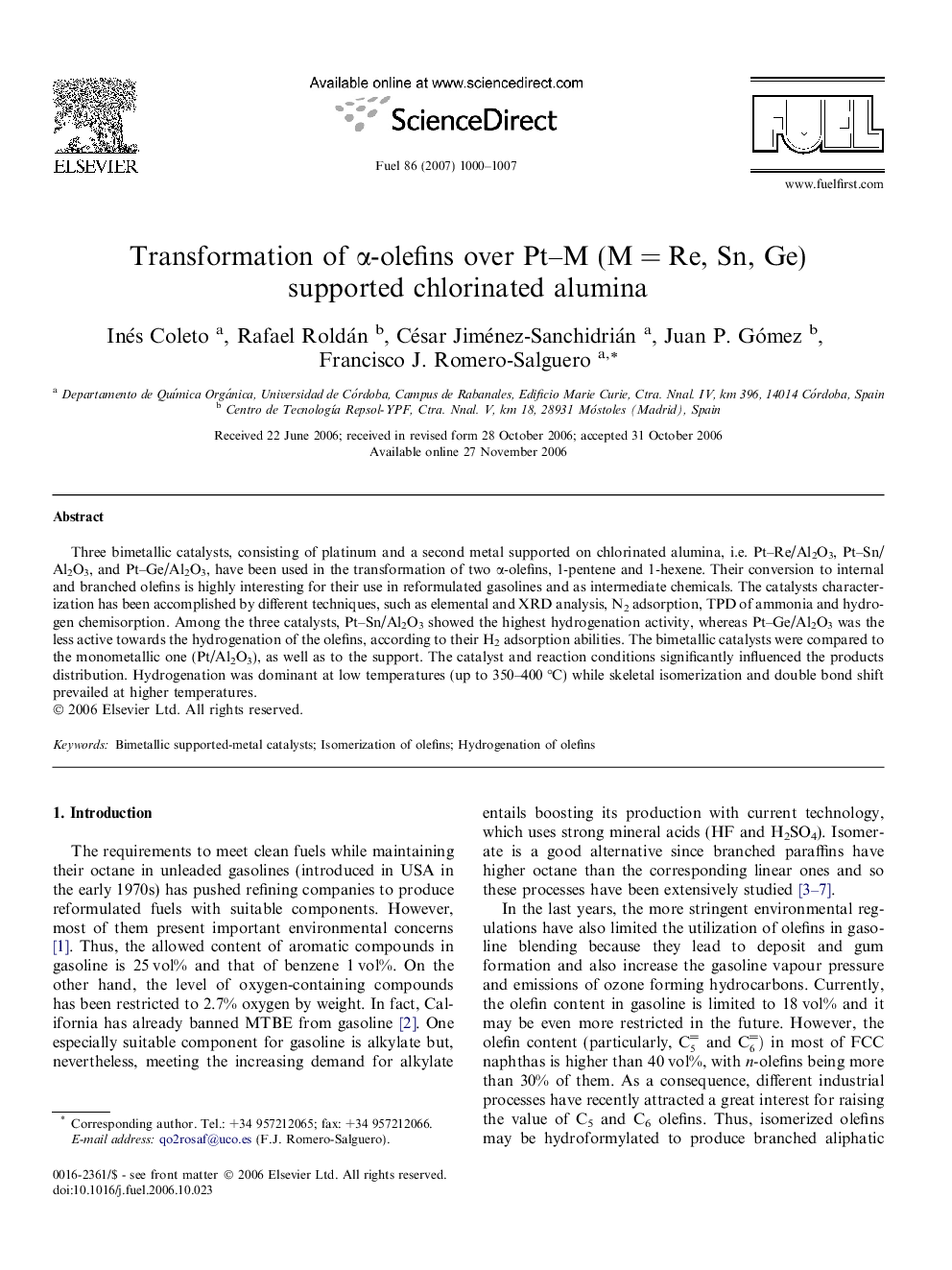| Article ID | Journal | Published Year | Pages | File Type |
|---|---|---|---|---|
| 208313 | Fuel | 2007 | 8 Pages |
Three bimetallic catalysts, consisting of platinum and a second metal supported on chlorinated alumina, i.e. Pt–Re/Al2O3, Pt–Sn/Al2O3, and Pt–Ge/Al2O3, have been used in the transformation of two α-olefins, 1-pentene and 1-hexene. Their conversion to internal and branched olefins is highly interesting for their use in reformulated gasolines and as intermediate chemicals. The catalysts characterization has been accomplished by different techniques, such as elemental and XRD analysis, N2 adsorption, TPD of ammonia and hydrogen chemisorption. Among the three catalysts, Pt–Sn/Al2O3 showed the highest hydrogenation activity, whereas Pt–Ge/Al2O3 was the less active towards the hydrogenation of the olefins, according to their H2 adsorption abilities. The bimetallic catalysts were compared to the monometallic one (Pt/Al2O3), as well as to the support. The catalyst and reaction conditions significantly influenced the products distribution. Hydrogenation was dominant at low temperatures (up to 350–400 °C) while skeletal isomerization and double bond shift prevailed at higher temperatures.
